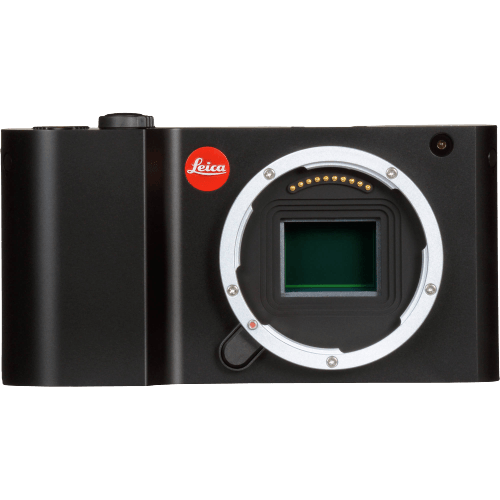Leica T Specs and Scores

The Leica T receives a score of 52/100 for its general specifications. Announced on April 24, 2014, and released later that year, this mirrorless camera is priced at $1850. The Leica T measures 134 x 69 x 33mm and weighs 384g (0.85lbs). Although introduced in 2014, its specs remain relevant in today’s market, offering a solid option for photography enthusiasts. The Leica T’s specifications showcase the camera’s quality and performance, making it a reliable choice for various photography needs.
Leica T Overview and Optics
The Leica T receives an optics score of 51 out of 100. This camera features a 16-megapixel CMOS sensor with an APS-C size and a 3:2 aspect ratio. The Leica T lens mount accommodates various lenses, but the camera lacks image stabilization. A Maestro II processor powers the camera, enabling a shooting speed of 5 frames per second. The DXOMARK score for the sensor is 75.
Comparing these specifications to other cameras in the market, the Leica T falls short in certain aspects. The 16-megapixel sensor is lower than the current market average, and the lack of image stabilization could result in less stable images. Additionally, the shooting speed of 5 frames per second is moderate, but not exceptional.
Taking these factors into account, the Leica T’s optics performance is decent but not outstanding. Its score of 51 reflects its middle-of-the-road capabilities in today’s competitive camera market.
Leica T Video Performance
The Leica T obtains a video score of 43/100, reflecting its moderate performance in this aspect. The camera’s maximum video resolution is Full HD, with dimensions of 1920 x 1080 pixels. It can record videos at a maximum frame rate of 30fps, which is not exceptional but still suitable for casual video recording.
However, the Leica T does not include built-in time-lapse functionality, limiting its versatility for capturing dynamic scenes. Comparing these specifications to current market standards, the Leica T’s video capabilities are not as advanced as many contemporary cameras. This makes it less appealing for those prioritizing video performance.
Taking all these factors into account, the Leica T’s video capabilities are satisfactory for casual users but may not meet the needs of more demanding videographers.
Leica T Features and Benefits
The Leica T obtains a feature score of 59 out of 100. In terms of specifications, it possesses a 3.7-inch screen with a resolution of 1,300,000 dots, providing a clear and sharp display. The camera includes a touchscreen for easy navigation; however, it lacks a flip screen, limiting its versatility in certain shooting situations.
The Leica T does not have GPS functionality, but it does come with built-in WIFI for seamless file transfers and remote control. Unfortunately, it does not support Bluetooth connectivity.
Comparing these features to other cameras in today’s market, the Leica T offers a decent selection of specifications, though it might fall short in certain aspects such as flip screen and Bluetooth connectivity. Despite these limitations, the Leica T remains a reliable choice for photographers who prioritize image quality and a compact design.
Leica T Storage and Battery
The storage and battery score for the Leica T stands at 24/100. This camera offers a single memory card slot, accepting SD, SDHC, and SDXC cards. However, it only provides a battery life of 400 shots per charge, utilizing the BP-DC13 battery type. Additionally, the Leica T lacks USB charging capabilities.
Compared to other cameras in today’s market, the Leica T’s storage and battery specifications fall short. The limited battery life and lack of USB charging may prove inconvenient for photographers seeking longevity and ease of use in their camera equipment. The single memory card slot also restricts storage capacity, which could impact efficiency during extended shooting sessions.
The Leica T’s storage and battery capabilities may not meet the demands of modern photographers, as it lacks the convenience and endurance found in competing models.
